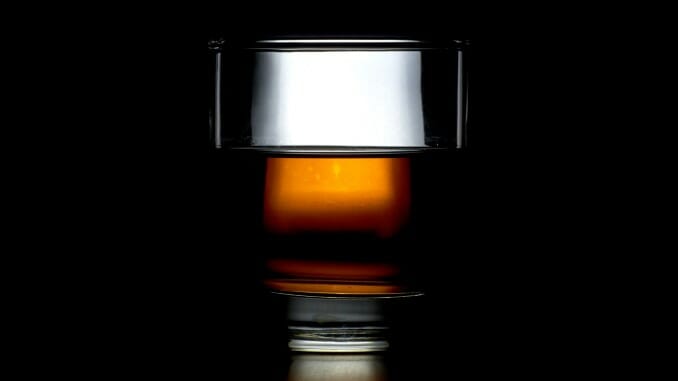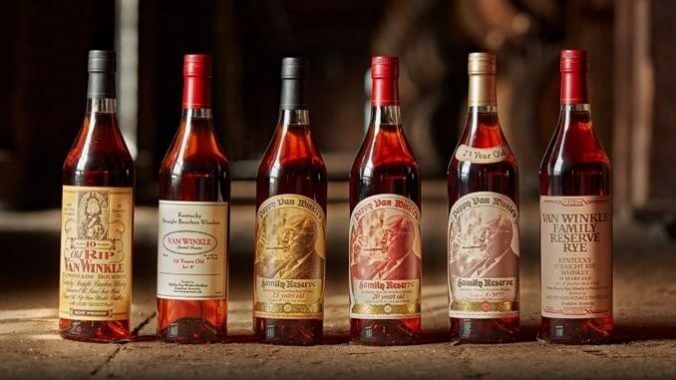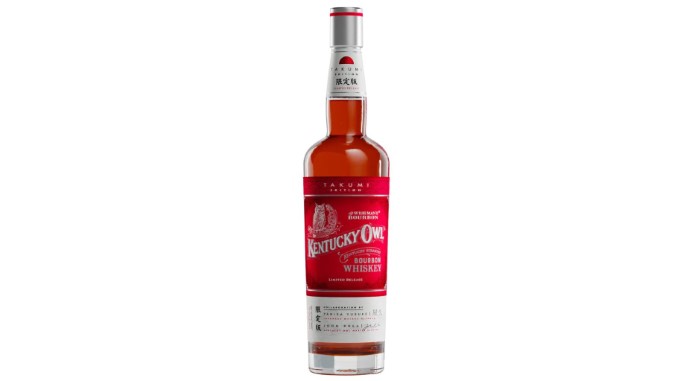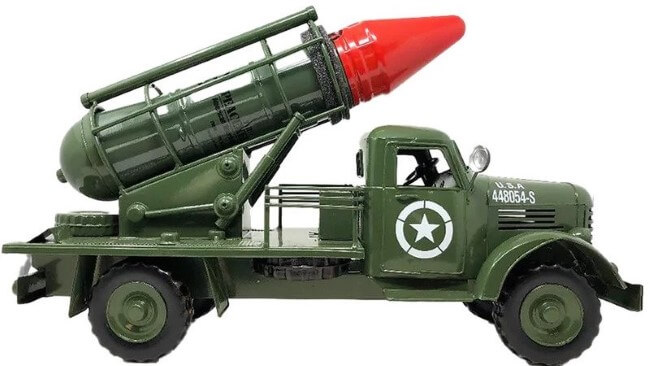“Limited Edition” Bourbon Releases Are Becoming a Farce

Something unpleasant happens, in a free market economy, when a segment of consumers are so desperate to lay hold of a type of product that they begin to ignore any and all conception of value in their quest to get it. Not only does value continue to decrease–nebulous a concept as “value” will always be, given that it’s individually decided by each and every one of us–but quality also likely begins to slip, because there’s no longer a market force necessitating that quality remains high. Or in other words: If consumers demonstrate that they’ll continue buying the product no matter what, does the producer even have an incentive to retain its quality? This is the thorny subject we must face as we confront the biggest issue in the American whiskey world today: Our absolute inundation with increasingly poor “limited edition” bourbon.
What is a limited release, or limited edition bourbon? How small, and how “limited,” must it really be to possess that title, and how much of a premium (of quality and price) do those words imply? It’s not a term that is easily defined, but one that falls squarely into “you know it when you see it” territory. In a general sense, we’re talking about whiskeys marketed as special releases, often featuring special maturation gimmicks, collaborations, special packaging and MSRPs of $100 and far, far beyond. Limited release products are, as the name would imply, available for a limited window, after which they may or may not ever be made again. Most won’t be, as their purpose is to generate a tidy profit, a little hype, and lead into the next limited release.
In other words, this is an issue revolving around the perception of scarcity, and how scarcity translates to hype, collectibility and price gouging in the bourbon world in particular. In this moment, there are far too many companies that have realized they can conceive almost any new bourbon as a “limited” batch with a low bottle count, and watch as hoards of FOMO-crazed bourbon collectors clamber over each other in a mad dash to see who can spend $150 first.
So, how did we get to this point, and what can we do about it?
A Runaway Whiskey Collectors’ Hype Train
Just a decade ago, a constant flow of limited releases wasn’t such a cemented concept in the whiskey world, and I suspect this is because bourbon hunting/collecting mania hadn’t yet hit the mainstream. At that point, bourbon was still largely the realm of lifelong spirits wonks, rather than newly converted suburban dads and white collar tech bros with gleaming shelves full of hundreds of “rare” bottles, all waiting for a “special occasion” to open that will never come. Store shelves were much more static than they are now, with less constant influx of new brands, and more discussion of the merits of various flagships and longtime stalwarts.
Obviously, much has changed in those 10 years. As Pappy-mania gradually broadened into “any Buffalo Trace” mania, a new generation of bourbon geeks was being brought up to believe that the only bourbon worth drinking was the bourbon that is, for one reason or another, difficult to acquire. This generation of consumer was effectively born into scarcity, having never experienced an era when some of the old shelf staples like Buffalo Trace, W.L. Weller or Henry McKenna Single Barrel weren’t just readily available, but literally everywhere. And now that those brands are much harder for the average person to find, it makes the bourbon-curious consumer that much more enticed by them, which contributes to a vicious cycle where anything with the perception of scarcity is deemed higher quality than any other bottle that is more easily found. A very small selection of brands have been collectively anointed as “the good stuff” by these drinkers, who largely ignore anything they can readily access. But they do make an exception for bottles labeled as limited editions, aka “LEs.”

It should come as no surprise that the bourbon mania that began with Pappy Van Winkle obsession eventually branched off into obsession with anything “limited.”
This reality, the product of millions of new consumers developing an interest in whiskey in the 2010s, built a bourbon culture in the U.S. that has come to revolve around conspicuous consumption and performative spending. It is a hoarding mentality; a money-burning mentality, in which the pursuit of “good” bourbon has been turned into a prestigious game of hunting and seeking, with the ultimate goal being the acquisition of bottles that win you the respect, admiration and envy of friends and other bourbon collectors. Clout is achieved by posting a photo of your receipt, showing that you were willing to drop $200 on the latest sourced juice, while implicitly telling the online audience that they’d better offer significantly more than that for the bottle when they inevitably slide into your DMs.
The distilleries and non-distiller producers, meanwhile, haven’t been blind to the development of this hype and clout-chasing bourbon culture–they’ve actively embraced it by creating a churn of new products that fit the limited release profile that is being sought. The train of thought is easy to grasp: If consumers are desperately trying to acquire the likes of the Buffalo Trace Antique Collection but can’t, maybe they’ll jump at the chance to buy something else being marketed as exclusive and rare as a consolation prize. These consumers were primed for this kind of exploitation, and all too thrilled to buy $100+ bottle after $100+ bottle for the sake of lining their shelves. It’s why I’ve previously pleaded with bourbon obsessives in particular to consider diversifying their interests into other spirits, where much better values can be found.
This isn’t to say that these are all bad products being rushed to market. Consider a significant bourbon brand such as Old Forester, which for many years was noted for the stability of its lineup and single bourbon mash bill, available in a small handful of expressions. For the longest time, the only “limited release” with the Old Forester name on it was the popular, annual Birthday Bourbon release, but the last five years or so have vastly expanded the number of small batch Old Forester expressions out there. Now there are cask strength single barrels, brand and movie collaborations, and an ongoing series of limited releases in its 117 Series, not to mention the expansions to Old Forester’s year-round product lineup. Many are quality products, but it’s all a bit overwhelming at the same time.
These are the kinds of changes that big distilling entities have made to their product lineups to keep up with the frenzy for limited edition releases. Heaven Hill redesigned Old Fitzgerald, turning a former bottom shelf brand into a luxury one, before adding limited edition, cask strength expressions of other brands such as Larceny and Bernheim Wheat Whiskey. Jim Beam began a steady stream of special edition Knob Creek one-offs, and other new limited release series such as Hardin’s Creek. All of the big names have gotten in on it, making it so the release calendar seemingly doesn’t have a day without something “LE” dropping. Which of course begs the question: How many LEs can there really be, before you can no longer convince people that the latest one is special? And which companies do you trust to give you value on the latest $100+ bottle?
The LE Bourbon Crapshoot
I sometimes feel like the rise and fall of certain hyped craft beers helped to inform the way the whiskey world now approaches its limited edition releases. Back in the 2000s and early 2010s, barrel-aged stouts such as Goose Island’s Bourbon County Stout or Founders Brewing’s Kentucky Breakfast Stout (KBS) had a huge cult of personality around them–they were frequently cited as two of the best beers in the world, and inspired frenzied devotion and people camping out overnight in tents to secure bottles when they were released. But as both companies ramped up production and the beers became more easily acquired, consumer perception of both brands quickly shifted, now seeing them as more mundane. Gone was the mystique of their limited edition status, and it wasn’t as if quality actually declined in either brand–it was the hype that simply melted away as the scarcity became a thing of the past. Today, bottles of Bourbon County Stout sit on store shelves for years, and KBS is found in supermarket coolers around the country. It’s a classic human trait: Once we can get something, we no longer really want it.
The bourbon industry seemingly responded to this by veering in the opposite direction to the point of absurdity–it embraced artificial scarcity by designing so many of its new releases as ULTRA LIMITED EDITIONS, but combined those limited bottle counts with aggressive release schedules of one LE after another. And as MSRPs ballooned and the number of LEs on the shelf increased, we increasingly have begun to see ones that struggle to justify what about them is supposed to be special or intriguing in the first place.

A bottle like this could have incorporated Japanese whiskey, or Japanese oak, or other Japanese fruit liqueur such as umeshu. Instead, it’s just Kentucky bourbon with Japanese iconography.
Consider the example of Kentucky Owl, a company that began its life by focusing on cask-strength, extra-aged, high price tag blends of sourced Kentucky bourbon to great critical acclaim. After its acquisition by Stoli, things began to change–focus moved away from the original series of blends and in the direction of lower price flagships. Then the new LEs began rolling out, some with absolutely outrageous price tags. More troubling, though, is the most recent LEs that simply feel like excuses to repackage the same Kentucky whiskey as always, albeit with the most flimsy of thematic justifications for what supposedly sets each batch apart. There was the St. Patrick’s Limited Edition, for instance, somehow meant to honor Irish distilling traditions with a bottle of American bourbon, and no particular Irish influence. And then last fall there was the Takumi Edition, a Japanese-themed release whose sole Japanese influence was the participation of a Japanese blender, rather than the incorporation of, I don’t know … Japanese whiskey, perhaps? When there were so many potential routes to conduct such a collaboration in a more genuinely transformative way, simply slapping together another bottle of Kentucky bourbon (with a $150 MSRP) feels like the deeply cynical move of a huge international corporation, which trusts whiskey geeks will simply buy the bottle anyway because of its limited nature.
Watching the success of these limited releases and the fervor to buy them has likewise seemingly given rise to new non-distiller producers in particular that were conceived solely to put these types of releases together, taking advantage of the sky-high MSRPs that come with them. Take a gander at a company like World Whiskey Society, for instance, which states its goal is to “set out to create the world’s most exclusive and sought-after spirits.” I ask you: Is that not a quality that theoretically should be earned by a distillery or a non-distiller producer over a long period of time? Can one really set out with the goal of “creating the world’s most exclusive and sought-after spirits” immediately, out of the gate? Is it not haughty on some level to even act as if this is something you could quickly achieve? Why should the consumer immediately believe your product is exceptional and worth exorbitant price tags, when it’s brand new in the marketplace?
Moreover, when you look at the specs of some of these releases, they don’t even seem to match up with the asking price. What should a 6-year-old bourbon, finished in tequila barrels, cost? Would you guess it’s $134? How about a non-age-stated bourbon with no other information available for $164, because it happens to come in a bottle shaped like a missile? Don’t question it; it’s a limited edition! Buy it quickly, we need to make room for the next ultra-limited edition!

I realize it sounds like I’m just making up nonexistent products, but I swear this is apparently a bottle of bourbon. A non-age-stated, 80 proof one that costs $164. Sounds like a great deal!
Throughout the industry, consumers are simply being asked to fork over huge sums of money for access to anything with rarity, or merely the perception of rarity, often with no justification beyond “someone with a good palate insists this is high quality.” Look at an ultra-premium service like Eaves Blind from former Castle & Key Master Distiller Marianne Eaves, which sends a curated whiskey tasting kit–mostly from smaller craft distilleries around the U.S.–to your door for a mere $1,000 investment. Just how exceptional are these small samples implied to be, to justify that huge expenditure?
Last year, for the first time I can remember, I received a press release from a distillery in which the PR person not only noted their expectations for a limited edition whiskey release to fetch a hefty sum on the illegal secondary resellers’ market, but bragged about its secondary value as a selling point for why collectors would want to acquire it in the first place. After I pointed out to the brand that this was probably not a message they wanted to be conveying, they agreed and removed the language, but it has now become a crystalized moment in my memory–one I think back to whenever I see a new LE release being touted that seems particularly cynical in its intentions. Sadly, these moments are only becoming more common, as there appears to be more competition and jockeying in the ultra-premium, ultra-“limited” whiskey space now than ever.
As consumers, the onus falls on us to stop being ensnared by this kind of bait, if we don’t want to see these types of releases continue to proliferate in the whiskey world, especially in the bourbon community. Many drinkers out there will likely need to reevaluate the root of their compulsion to acquire anything new and limited hitting the market–a difficult thing to be told, when you’ve come up as a self-proclaimed “bourbon hunter” in a scene where clout is handed out to those who performatively spend as much money as possible. Ask yourself: Does that last $150 bottle of sourced bourbon you purchased really provide as much value or quality as a dependable, $50 bottle of something like Wild Turkey Rare Breed? And if the answer is “no,” consider not feeding into a culture of constant LE releases of dubious merit, and maybe we’ll see fewer of those questionable releases in the future.
Jim Vorel is a Paste staff writer and resident beer and liquor geek. You can follow him on Twitter for more drink writing.







































